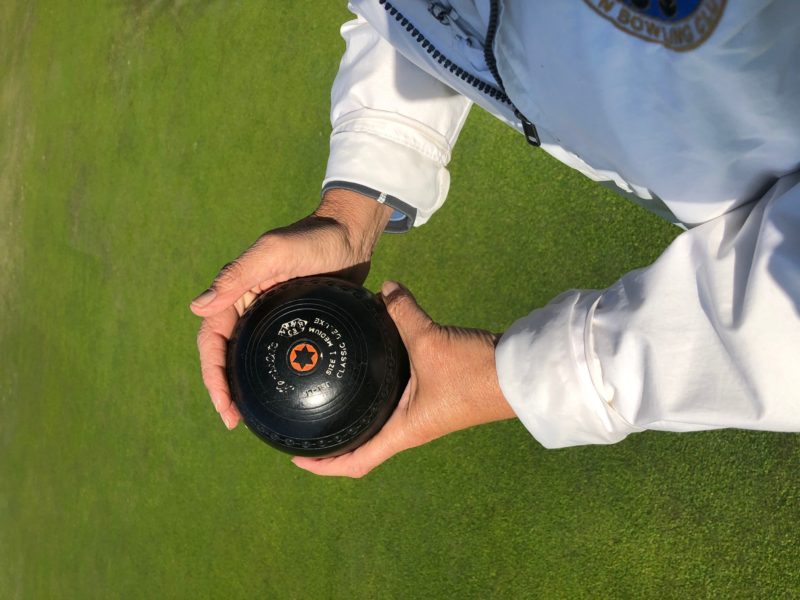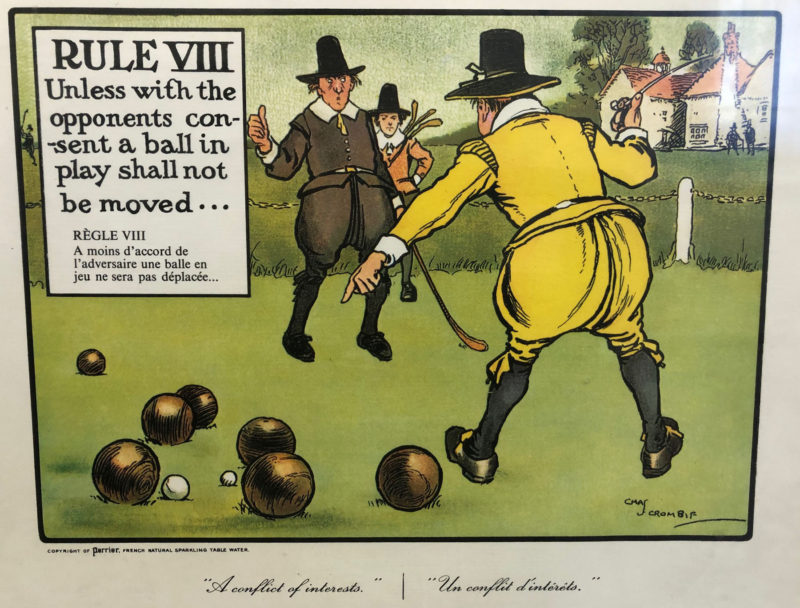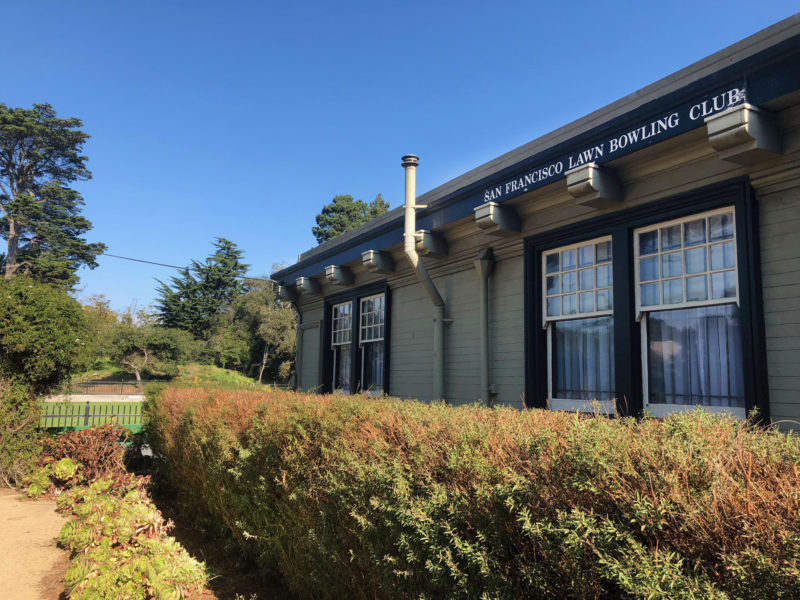San Francisco’s ‘Woman Lawn Bowler of the Year’ touts age-old sport that’s got something for every age
Christine Raher had never won a trophy in her life, despite being a team competitor in tenpin bowling throughout college. But within eight years of taking up lawn bowling in San Francisco, she has twice been named Woman Lawn Bowler of the Year by the venerable Golden Gate Park club.
Raher has been a member and active player at the 130-member San Francisco Lawn Bowling Club since 2011. She claimed this year’s top honor for women lawn bowlers just four years after she first garnered the title.
“While I am thrilled to once again be the Woman Lawn Bowler of the Year, the 2015 win was one of the best thrills of my life,” Raher said. “During the 2015 season when I kept winning or coming in second (in tournaments), I had no idea that I was in competition for the title.”

That year, her friends and family joined in the celebration. Her three sons were especially proud, said Raher, now 71. “My middle son, who was an NCAA athlete (basketball at Cal), was perhaps the most elated. He said, ‘Mom, at your age, there aren’t many athletic activities where you can place first.'”
He eventually bought a huge trophy and presented it to her in front of the family at Christmas. “This year, she said, “he and his daughters presented me with a handmade certificate and a 3-inch plastic trophy, the sentiment always the same — ‘Way to go, Mom’.”
As her son implied, lawn bowling exemplifies the perfect sport for seniors who have just a little competitive spirit and want friendship and laughter along with low impact activity. For Raher, lawn versus alley bowling is the difference between hefting a 10-lb. ball or a 2-lb.”bowl,” as it’s called in the outdoor sport. And it’s easier on the arthritis in her fingers, which only have to cup a bowl rather than fit into bowling ball holes, she said.

And it can be played all year long,” said Raher, “except when it rains because it would make divots in the greens.”
Games are played amid the lush greenery of Golden Gate Park. Its three real-grass courts are anchored by a more than century old clubhouse – city landmark #181 – near the Conservatory of Flowers.
The clubhouse also serves as a hub of fellowship. On the second Tuesday of the month, birthdays get celebrated and stories get told. In addition to bowling, members enjoy playing cards, board games and backgammon or trying their hand at a newly installed dart board.
“Most of the time, we’re laughing when we’re on the greens,” said Raher, noting that members prefer friendly play. There’s an understated but ever-present etiquette that’s maintained in part by a traditional code of behavior with its roots in common courtesy. But that doesn’t disallow a good-natured but low-key competitiveness. It’s more about improving your own score than beating the other guy, said Raher.
“Bowls is a science, the study of a lifetime. It is a contest calling for courage, skill, strategy, and self-control. It is a test of temper, a trial of honor, and a revealer of character. It affords the chance to play the man/woman and act like a gentleperson.
– American Lawn Bowls Association or Bowls USA
It affords the opportunity of going into the great outdoors, getting close to nature with lots of fresh air and exercise. It is a cure for care plus an antidote for worry.
Besides promoting physical health, it includes companionship with friends, social activities in the bowling clubs, opportunities for courtesy, kindness and generosity to an opponent.
Raher took up lawn bowling after retiring from her administrative position of 23 years at the University of San Francisco. Her husband, Tom, who is a golfer, started lawn bowling in 2009 and later welcomed his wife to join.
Her in-laws started lawn bowling first and encouraged her husband, she said. “He enjoys golf so he tried it. He found that this sport was similar to lining up a putt.” The ovoid, wooden bowls are weighted on one side, steering them right or left – like a golf ball’s slice or hook – depending on how they’re held. “You have to ‘read’ the greens to see how they slope and how fast the ball would roll on that surface,” said Raher.

Her first exposure to bowling was the tenpin kind in her birthplace of Chicago. She excelled in the Women’s Bowling Team at the University of Illinois, where she worked and went to school. She traveled with her team and competed against other Midwest schools.
“People who enjoy tenpin bowling will find lawn bowling an easy crossover where strenuous physical exertion is not required,” she said. Instead of knocking down a bunch of sturdy pins, players roll the bowl as close as they can to a smaller white ball, or “jack,” placed on the other side of the green.
The sport is truly low impact and accommodating to people with physical challenges. If a player has any difficulty stooping or bending, the club has a special wheelchair that can be used. It also has an arm extender for those with shoulder or arm stiffness that facilitates launching the bowl.

Lawn bowling has been dated back to 5,000 B.C. in Rome, but may have earlier roots. Under Caesar’s rule, it was known as “bocce.” By 1299, the game sometimes called the “Sport of Kings” was well-established in England. It became so popular in England and France that it was prohibited for a time because archery, essential to the national defense, was being neglected.

The San Francisco club itself enjoys a long and rich history. It was founded in 1901, the first club of its kind in the nation as well as the first to host national championships – the superbowls of this sport. Two of its female members won the doubles competition in the World Bowls Open at the 1939 Golden Gate International Exposition on Treasure Island. In September, the club hosted this year’s national lawn bowling championship.
Operating under the auspices of Bowls USA, the Golden Gate club is a member of the Pacific Inter-Mountain Division, which includes five other clubs – in Palo Alto, Santa Clara, Oakland, Berkeley, and Rossmoor (Walnut Creek).

Lawn bowling is a sport for all ages and abilities, and the club has signed on to this legacy in cooperation with the San Francisco Recreation and Parks Department in its recent renovation of the clubhouse, meticulous upkeep of the velvety greens, and a continuing invitation to all to visit, play and join.
Membership is growing by 10 percent every year, said John Grimes, club president and coach. Although members have been predominately seniors, he said, “There is plenty of room for younger players.”
At present, members‘ ages range from the 50s to 90s, averaging in the 60s, said Raher. But the club is attracting more members in their 50s, she said, and that may skew the average lower.
Free lessons are available on Wednesdays and Saturdays (weather permitting … call 415-487-8787). Once you become a member, you receive a locker and access to the clubhouse. You can use the club’s training bowls until you get your own set. Then you can bowl whenever you like, or at the Tuesday or Wednesday pick-up games or the pre-scheduled tournaments.

What does it take to become a member? “Not too much,” said Grimes. Membership costs $125 a year. “Think of the cost of one fancy dinner out in San Francisco, which is only for one night,” he said. “Contrast that with a yearlong membership at the SFLBC where you get lots of socializing, low-impact activity and opportunity to build and maintain mental acuity.”





